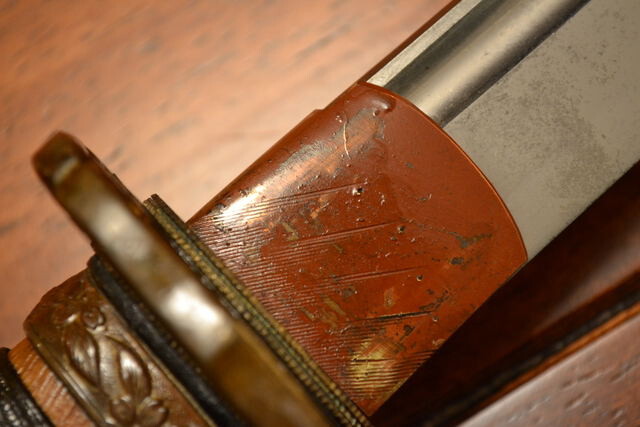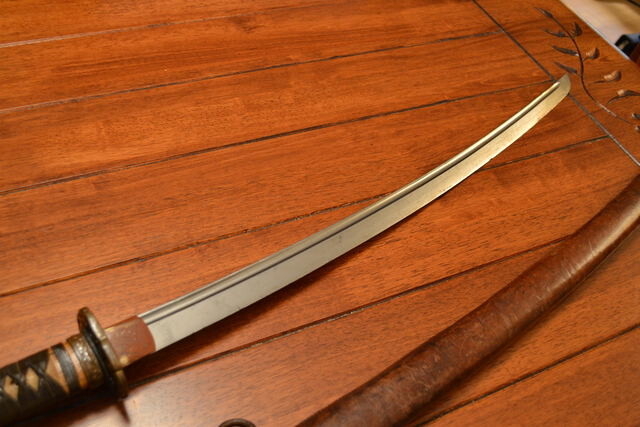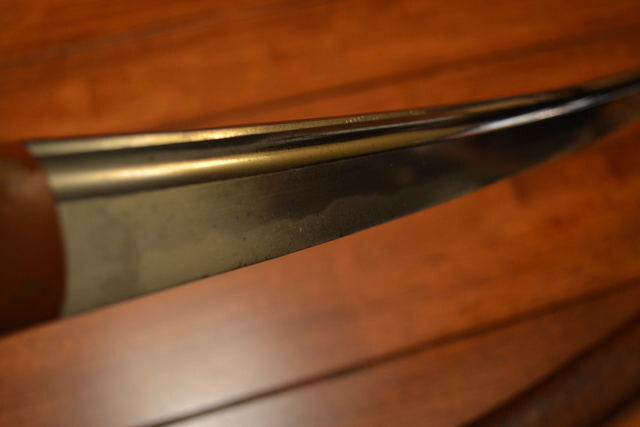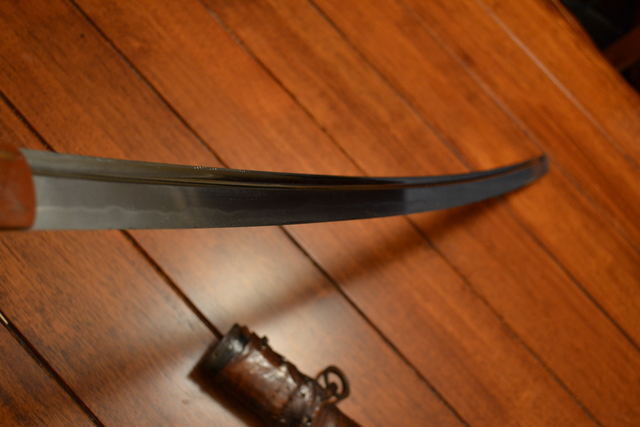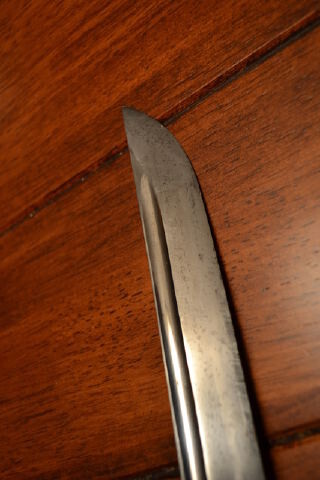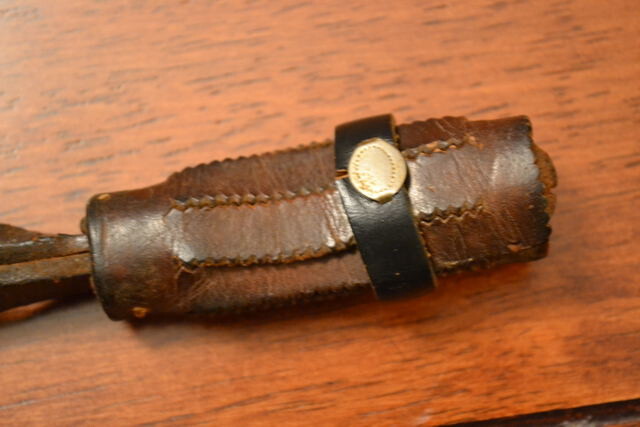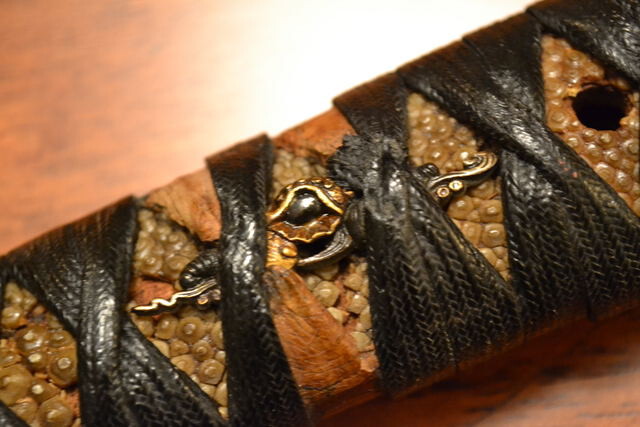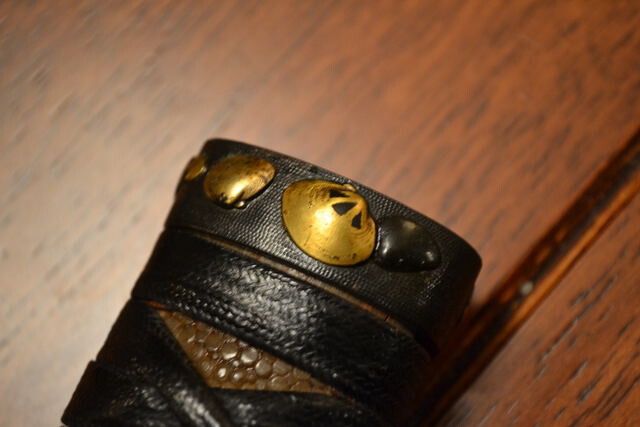
Max C
Members-
Posts
28 -
Joined
-
Last visited
Everything posted by Max C
-
I am raising the question again, is there any expert that anyone could suggest to authenticate these blades and who might be willing to travel to Quebec?
-
Thanks! Here are two close ups of this last blade.
-
Well I wasn't expecting that! Of course the next step would be to show it to an expert, I am would never feel confortable to officially identify this. Could anyone suggest someone able to authenticate this piece? It is located in Quebec City, Canada.
-
Any other guess on the second tanto or the wakizashi tsuba mei?
-
Thank you Thomas. It appears that the blade has a couple of kitaeware. I believe this would be indicative of a folded (if somewhat badly) blade?
-
Thanks to both of you. I'll try to post some more pictures tonight when I get home, I don't think any of them really shows it but there was some kind of a faint hada going on.
-
Also realized that some pictures were missing. Second tanto: The tsuba for the wakizashi
-
Thank you! As for the second one, its not much clearer but here is another view. http://i42.tinypic.com/33lhtl5.jpg
-
Hello everyone, I am helping a local regimental museum to identify part of their sword collection, among them are many nihonto and a couple of gunto. This one grabbed my attention as it seems to be a naval officer sword with a nihonto blade. I am unfamiliar with naval sword tassel so if anyone could name the rank it identifies I would be grateful. Also can anyone identify the mon and translate the mei? Thank you for any help you can bring.
-
I am helping a local regimental museum to identify some of the swords in their collections. Some of them are Nihonto, and I would be glad if you could help me to identify some of them. The first one is a small tanto with a kanji horimono. Unfortunately the kissaki is broken but it is signed , and interestingly the sageo seems to be recycled from a military gunto tassel. It is very scratched and I could barely make out the hamon or hada. The second one is also a tanto, lavishly decorated, the saya lacquer work is done so that a raised decor representing a dragon is shown. It is also signed, unfortunately a mekugi hana was pierced partly onto one of the characters. The blade exhibits a single bo-hi and has an assymetrical theme to its fittings. The third one is a wakizashi, the blade was cut and is unsigned but the tsuba is signed, part of the yasuri me is still visible. Any information you could give would be very much appreciated.
-
Thank you Piers! I took a look at that list for a couple of minutes and... oh boy! I came up with a couple of candidates but none of them really look like what I have here, but I guess its just because of the way it was stylized. What would the kanji refer to? A unit or a family?
-
Hello everyone, I just bought this antique jingasa, and was wondering if anyone could help me identify its provenance and age? The Mon is familiar but I can't remember where I've seen it before. Any hint you can give is appreciated!
-
Thanks for the info Lance. Would be great to have a thread with unusual details on gunto/military gendai to. If anyone has anything to contribute please do so!
-
Thank you Mariusz, most helpful indeed!
-
As some people seem to have trouble accessing the pictures I am uploading them right here. No one ever seen or heard of a stamped sword with a bohi?
-
That's strange I can access them even from another computer, but thanks for letting me know. Here is the first set.
-
Hi Ernst, I looked closer and it rather seems that the insignia is silver, not brass, whatever that may change. The barrel is detached in the front but it is very solid, but you are right that might be why it was added, although it would have been simple to simply reattach it.
-
I picked up this gunto recently, what I thought at first to be an older blade in gunto mount, turned out to be a rather well made gunto with a bohi. It was made by Kiyonobu (thanks to Chris Bowen) in 1942 and has a Seki stamp. Now the hamon seems real water quenched to me (feel free to correct) but I cannot see any clear hada with all the scratches and rust. The blade is also very light and very well balanced, unlike most showato I have handled. Now if this is indeed a showato, I have never seen any stamped gunto with a bohi and was wondering if there are other known examples? Another thing I noticed on this sword was the tassel that came with it. It seemed to be a classic early NCO leather tassel, and I thought it could have been misplaced on this sword. But then, the barrel is equipped with some kind of a black leather ring closed by a small brass insigna. I have never seen such an accessory on NCO tassels, what would this be indicative of? Here are some pictures: http://imageshack.us/g/80/028of.jpg/
-
This wakizashi was, I am told, taken at the Japanese surrender in Singapore. It is in a rather sorry state but has lots of interesting characteristic and I would like to learn more about it. The blade has visibly been cut down and has a deep dark rust. It shows no visible mei. the hamon is not clearly visible, but appears to be a very thin suguha, I find this a tad worrying as the blade exhibits many hakobore, and one or two of them are relatively deep in comparaison to the hamon (at least if it is as thin as it appears) and to the hamachi. The fittings are even more interesting, the tsuba is very beautifull and intricate, but seems to have been covered by an amateur with some kind of clear lacquer, same for the ito and saya. Here are my questions: 1)I know that the blade would need a good polish to judge precisely, but based on what is here, how old could it be? 2)Would it be worth a polish? 3)How old would those fittings be? 4)Could it be possible to remove the clear lacquer on the tsuba without damaging it? I would guess some kind of acetone but I wouldn't want to damage any finish underneath. Thank you for any input you can give! Here is a link to pictures of this sword: http://imageshack.us/g/407/001xr.jpg/
-
Thank you Chris! Would you know by chance if that referred to Nagamura or another smith?
-
Greetings, I have just acquired this WW2 blade acquired in Singapore in 1945, and would like to know if someone could help me translate the mei. I believe the date is 1942 (correct me if I am wrong), but I am unable to make up the smith name. And yes it does have a seki stamp and is quite an unusual blade for a stamped piece. http://imageshack.us/f/607/nakago3.jpg/ http://imageshack.us/f/525/nakago4.jpg/ Thanks!
-
The fittings are also interesting (except for the ito). http://img132.imageshack.us/gal.php?g=14685306.jpg If its a chinese fake its the best I ever saw. As for being inneficient as a cutting blade, it depends on the steel, the hamon hasn't much to do if traditional methods weren't used, many modern production katana have fake hamon and cut very well.



